













The 19th and 20th centuries have seen dramatic changes to the role and nature of villages across Britain.
In the first 100 years of this period, Droxford reached the height of its importance as an industrious, self-sufficient regional centre.
Over the second 100, the village has become larger, quieter and more residential as its pivotal role and commercial activity have reduced.
In Victorian times Droxford was the fulcrum of a thriving rural hinterland.
The village served as commercial, administrative, education, transport and social centre for a substantial area of South Downs farmland.
Many of the places that embodied these roles still survive today. By exploring today’s village, you can discover the history and character of Droxford’s former times.
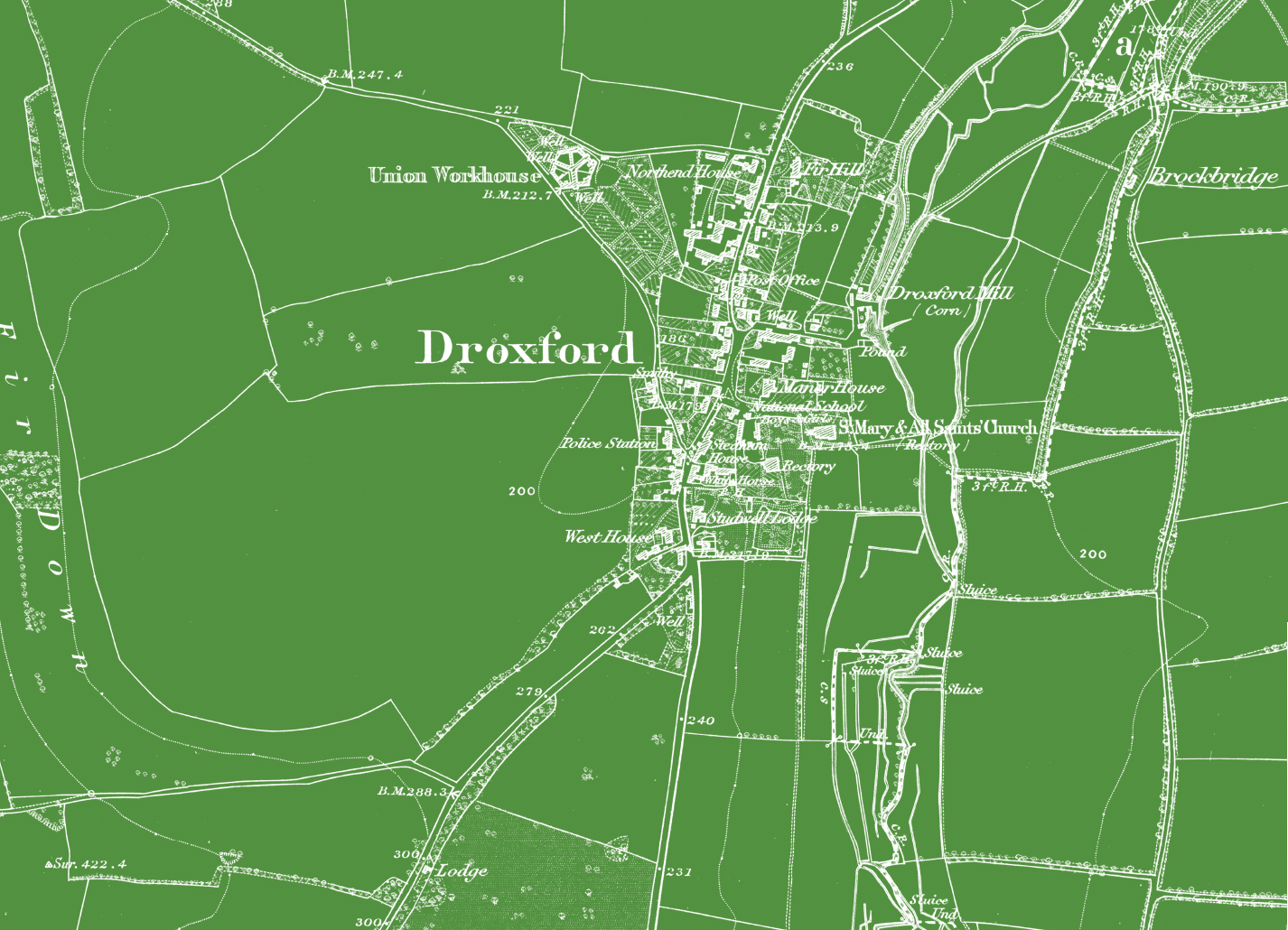
Reproduced under a Creative Commons Attribution-NonCommercial-ShareAlike 4.0 International (CC-BY-NC-SA) licence with the permission of the National Library of Scotland.
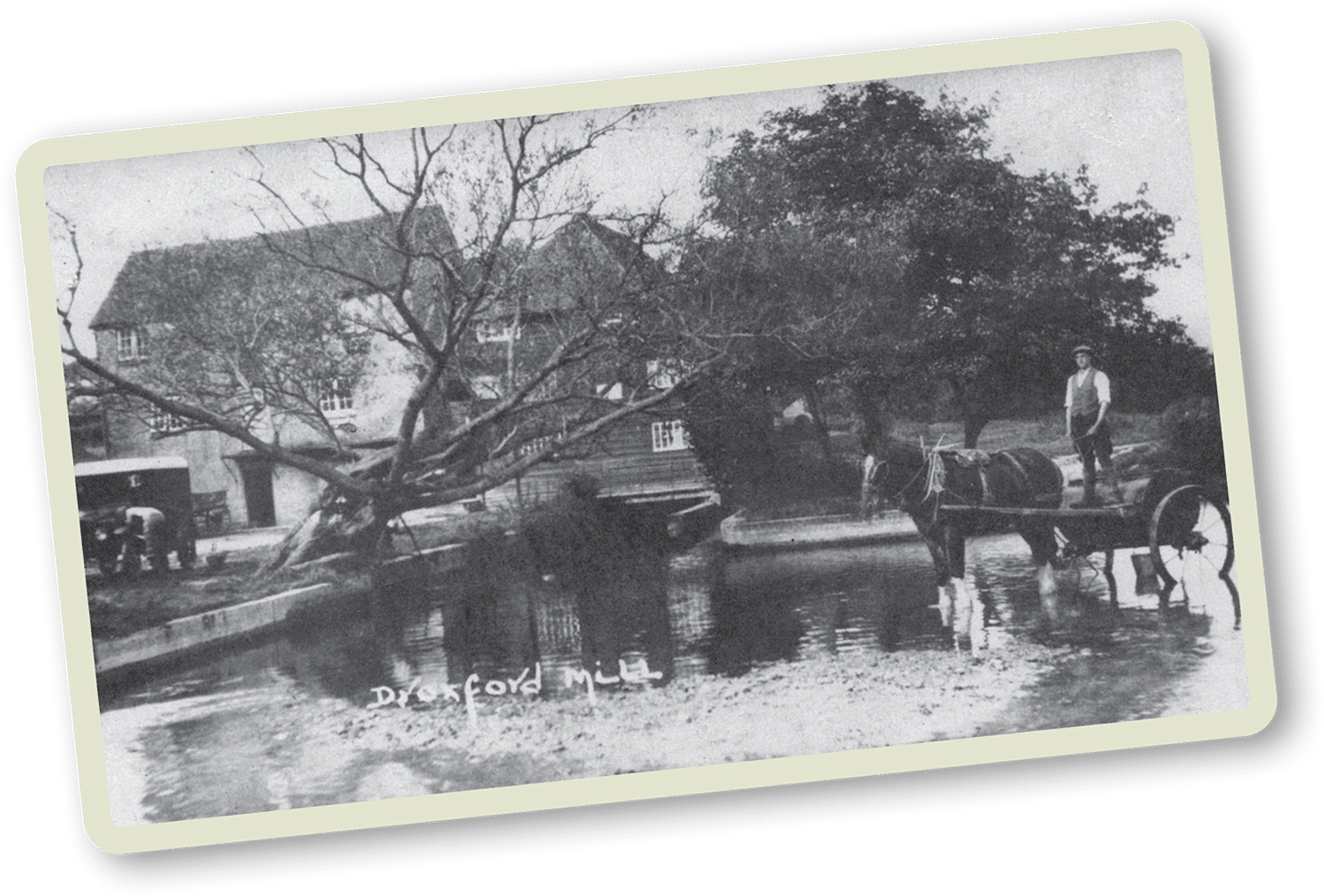
There were two mills in Droxford in Saxon times. Today’s mill house bears the date 1774 on its beams, though the old water powered millstones were replaced in 1898 with a steam-driven roller mill. The milling business became uneconomic and closed in the 1920s.
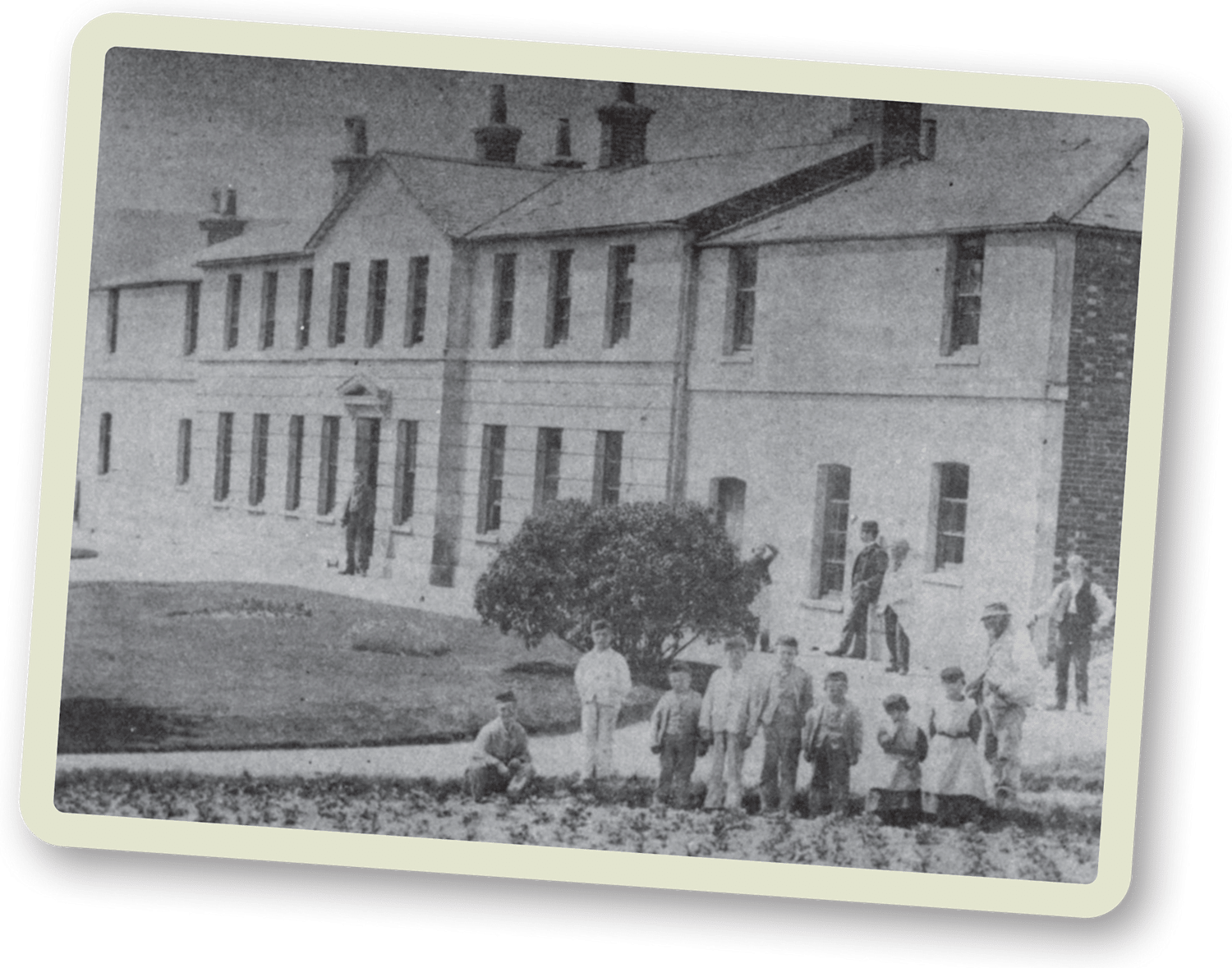
Photograph by Mr Grey of Southsea
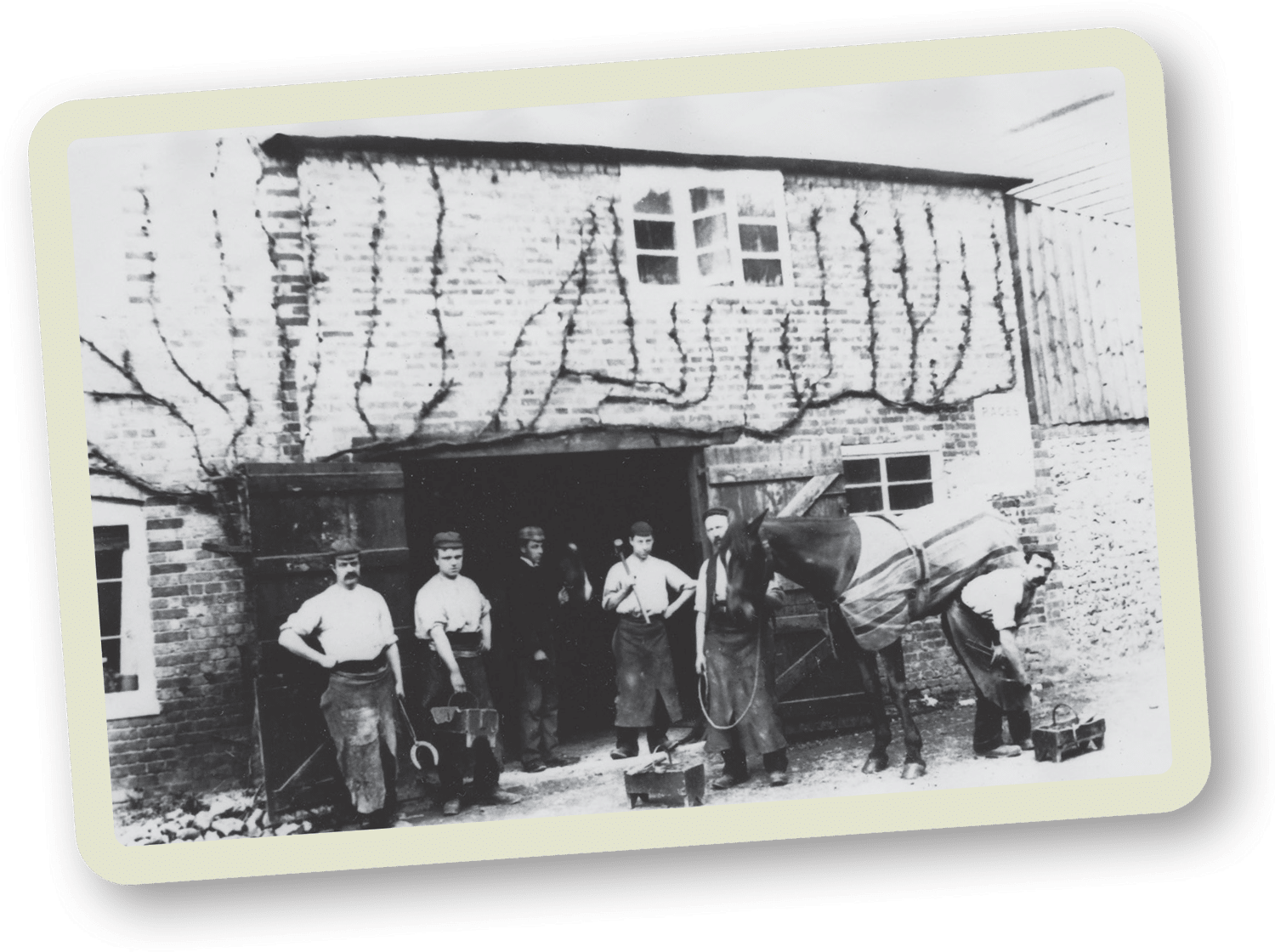
Two busy forges operated in Droxford in the 19th century, run by the Westbrook and Taylor families. As well as shoeing horses, blacksmiths undertook a variety of ironwork for farm implements, wheel rims, weather vanes, even iron hoops and quoits for children to play with.
Droxford’s first “National School” opened in 1835 for 96 pupils, aged 3½ to 14, with two teachers. The land and house for the school were gifted by Droxford Church. Children attended from up to 3 miles away. Holidays were short, though the school often closed for epidemics such as measles and scarlet fever.
The old school was replaced by a new county council school in 1929. Today Droxford Junior is one of Hampshire’s top performing schools. Heritage plays an important part in the curriculum: the South Downs landscape inspired the school to create the wonderful fused glass window shown on the introduction to this exhibition.
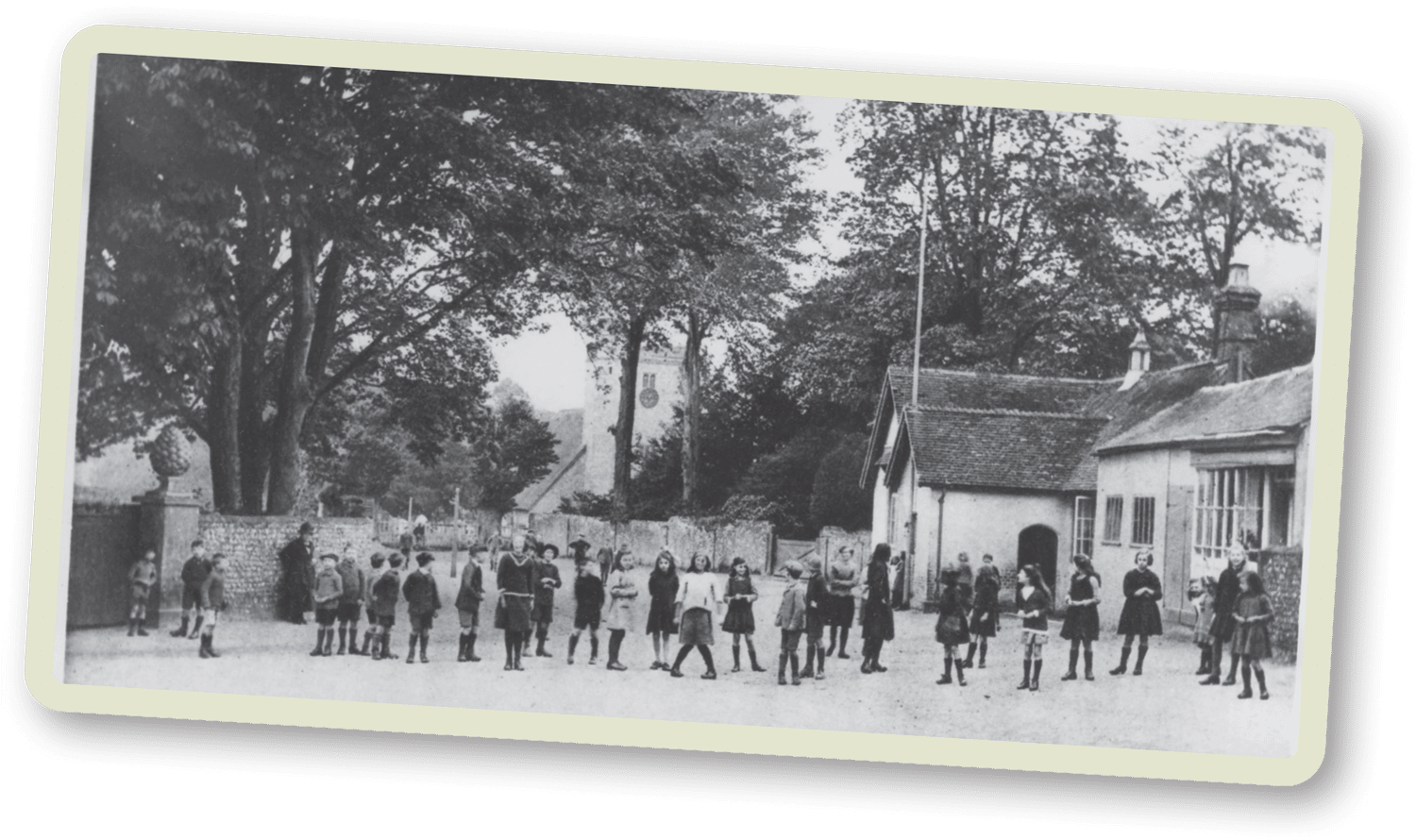
The Meon Valley Railway (MVR) opened in 1903, running 22¼ miles from Alton to Fareham, at a time when train travel was at its height.
The intention was that the MVR would form part of a major route linking London Waterloo to Gosport. Droxford was one of five stations, all with long platforms for the anticipated main line trains. However that plan was dropped and this local branch line became less viable as people took to their cars.
The Meon Valley Railway closed to passenger trains in 1955. Goods traffic to Droxford eventually ceased in 1962.
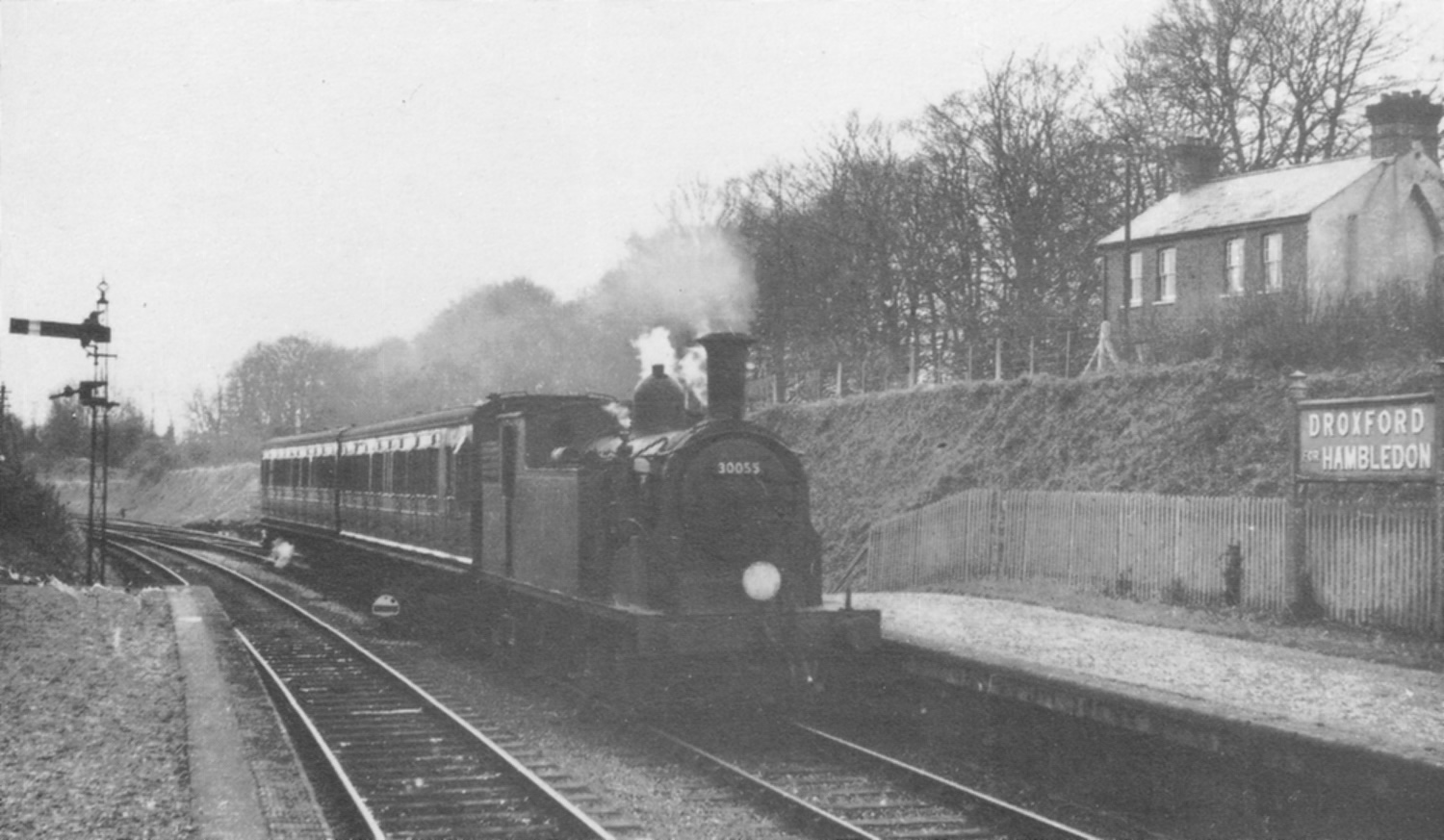
© S.C.Nash
The Meon Valley line had a considerable impact on the life of Droxford.
The railway revolutionised the process of shipping local agricultural produce, such as watercress, wheat, strawberries, milk and cattle. Special market-day trains enabled farmers to accompany their livestock, picking-up and setting-down at every station.
Local businesses geared up for an increase in visitors. The Railway Inn was built next to Droxford station to serve travellers.
The MVR also played a momentous role in the life of the nation. At secret Second World War meetings on a train in a Droxford siding, Churchill and other wartime leaders refined the plan for D-Day…
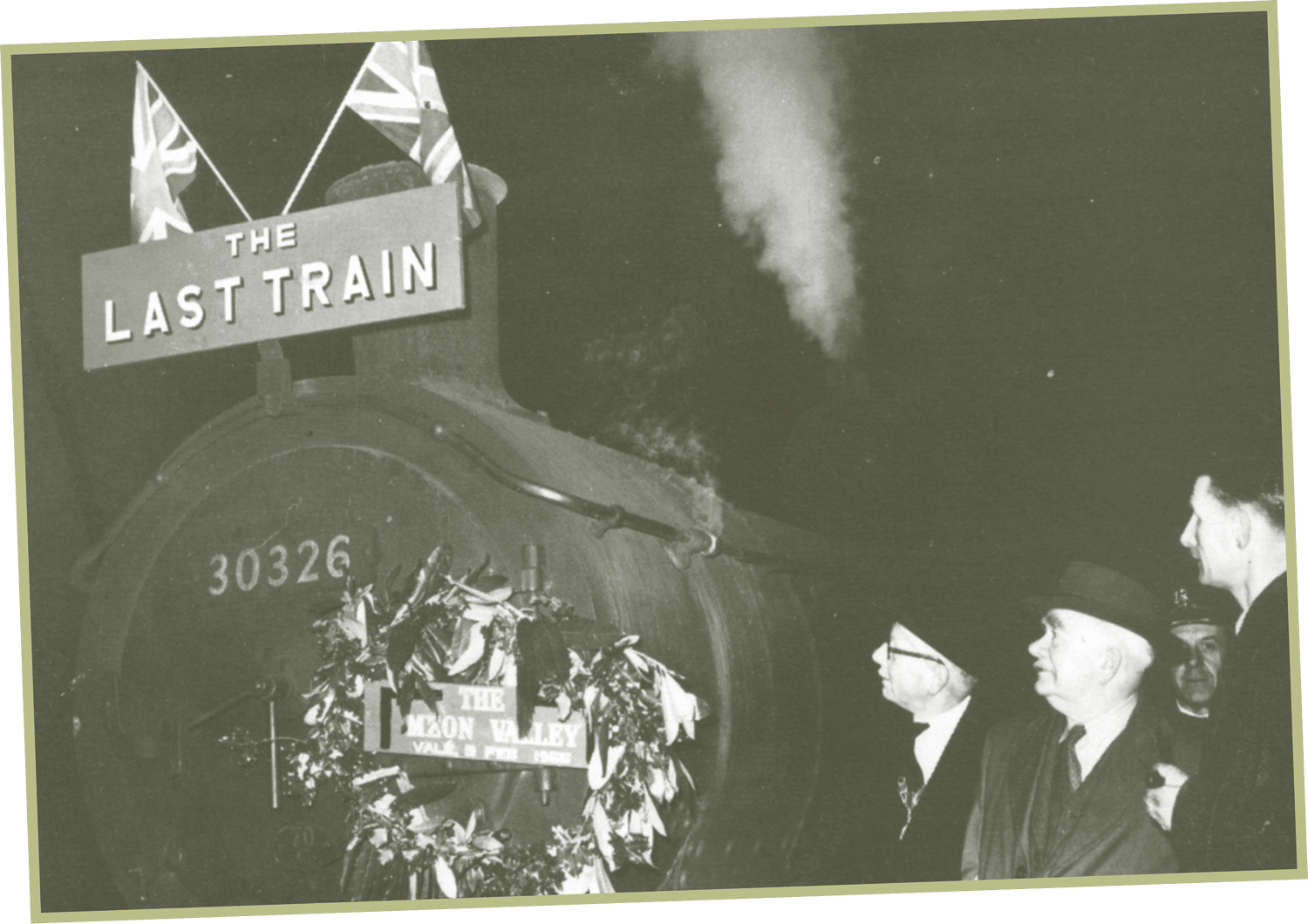
© The News, Portsmouth
On 2nd June 1944 Winston Churchill, Britain’s Prime Minister and wartime leader, arrived in secret at Droxford Station aboard his private train.
D-Day, the Allied drive for victory in the Second World War, was about to be launched. For the next few days, two coaches hidden in sidings within a deep cutting formed Churchill’s operational base.
Churchill came here to encourage the troops encamped nearby and to meet General Eisenhower, Supreme Commander of the Allied Expeditionary Force in Europe, whose headquarters were at Southwick House.
The timing of D-Day was in the balance, dependent on the weather and when best to surprise the Axis forces of Hitler’s Germany.
In his unseen coaches Churchill met with President de Gaulle of France, General Smuts of South Africa and other important wartime leaders.
This famous photo hung for many years in Droxford station, although it was actually shot in Ascot.
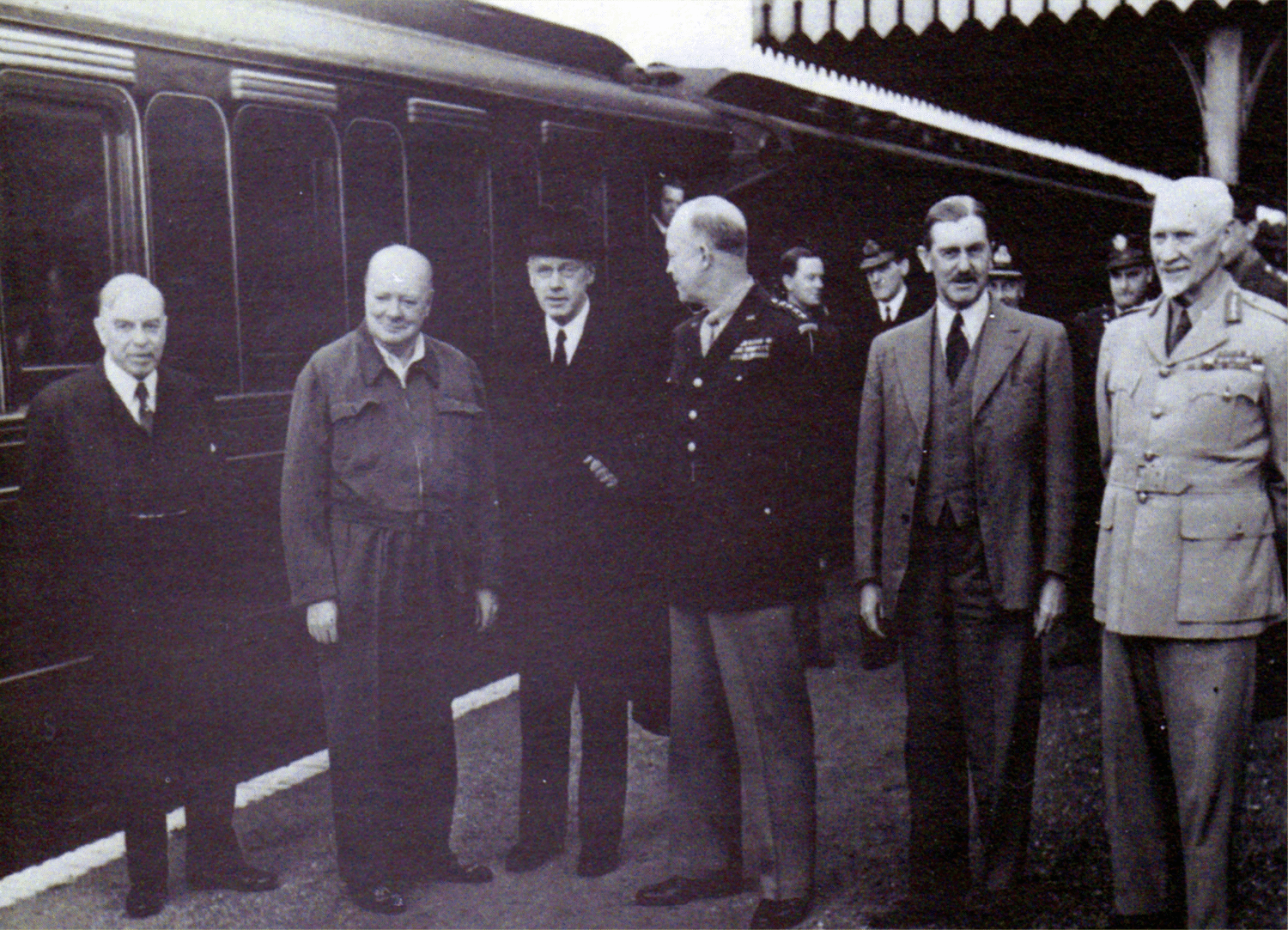
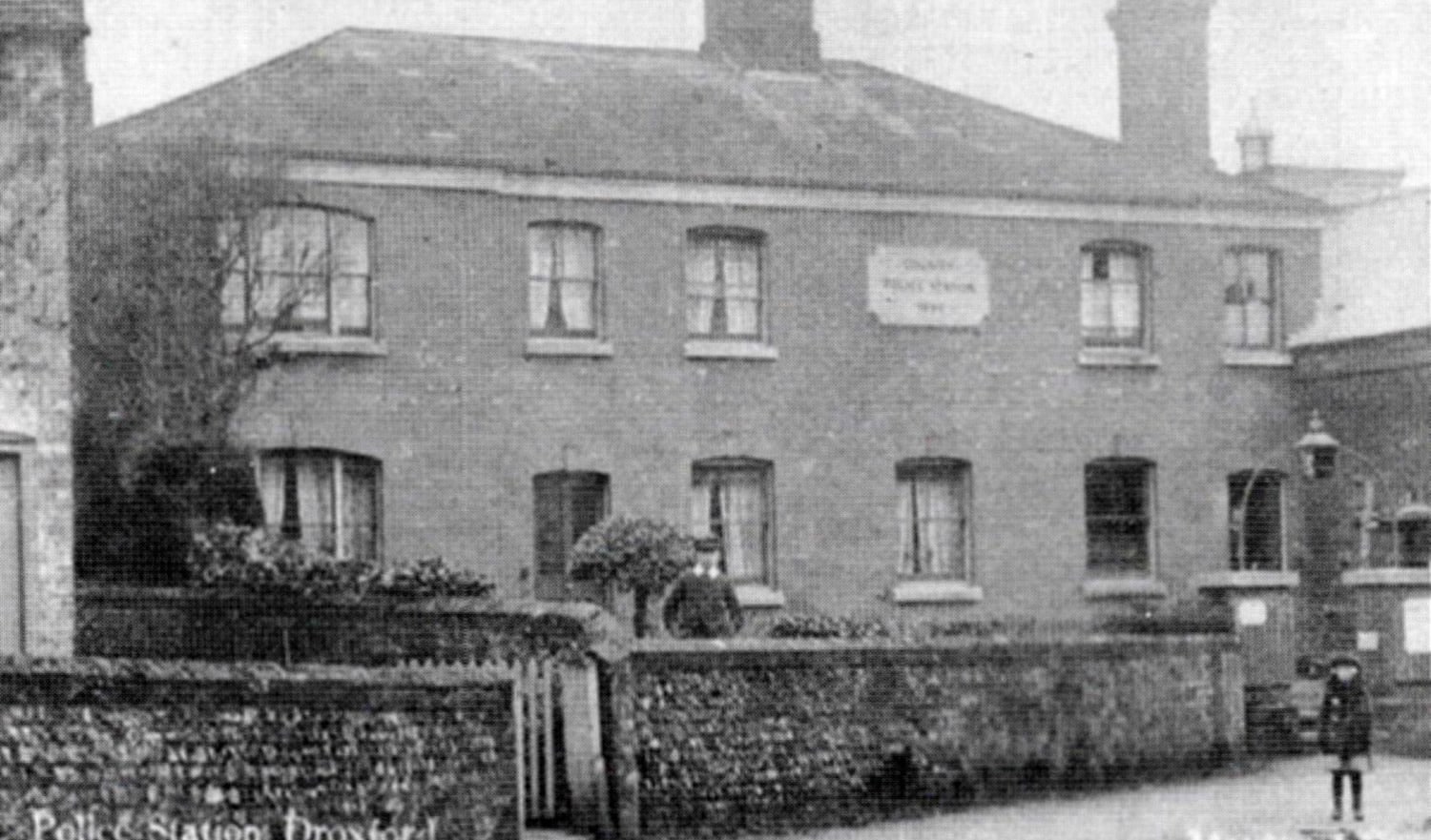
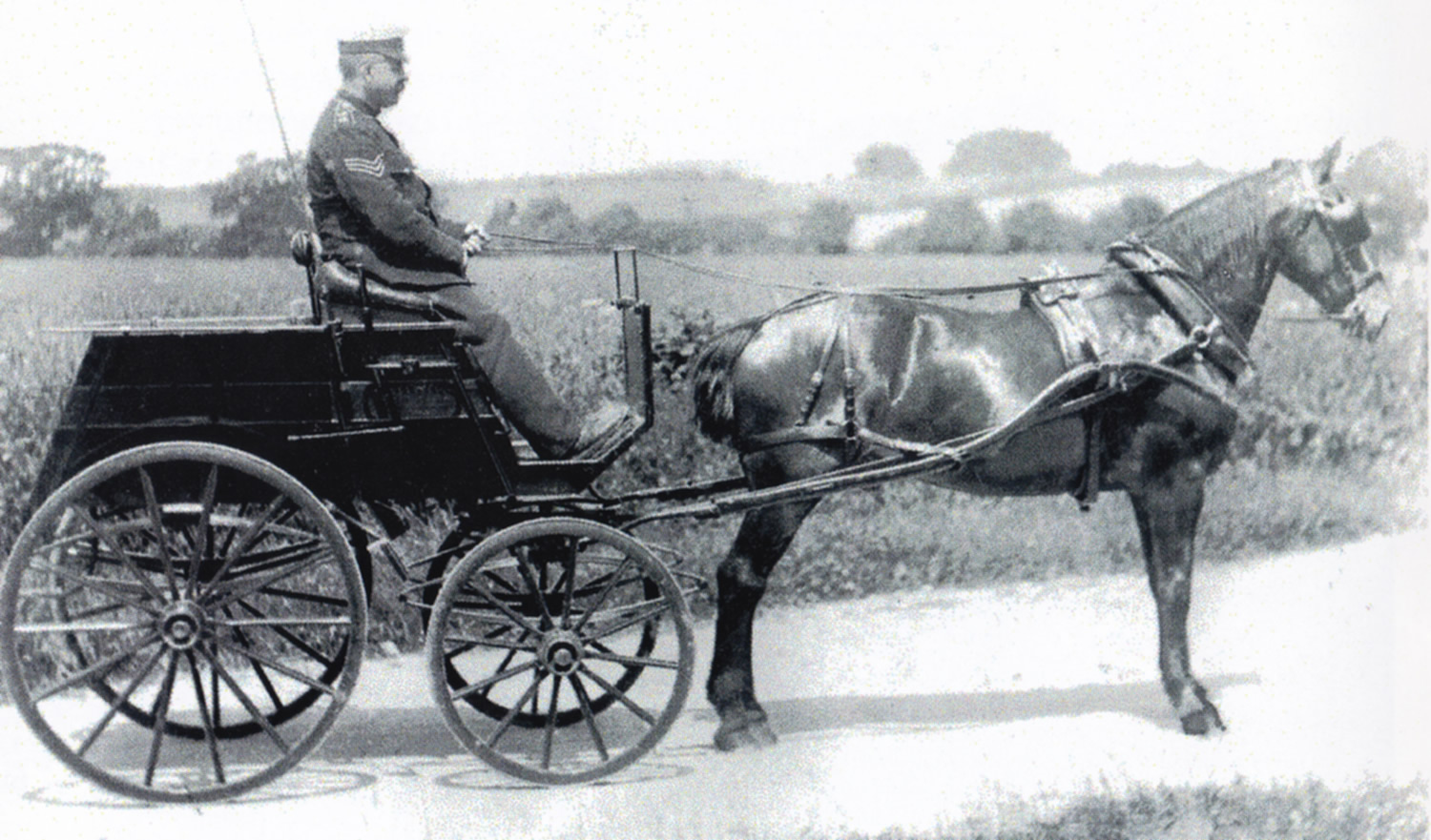
The village police station is pictured in 1905, when William Padwick was station sergeant. It was his family home: the Padwick children, Lance and Elsie, are shown in the photo.
The Padwicks were musical, hosting evening recitals at the police station as entertainment for people in service locally, who lived away from their own families.
The first half of the 20th century was the high point for Droxford’s range of shops, including greengrocer, tailor, bootmaker, baker, tobacconist and beer seller. The largest was Clark’s, a general store offering groceries, hardware and millinery. Originally they delivered goods by horse and cart. Staffed mainly by locals, this was the “social centre” of Droxford. Its closure in 1973 began the decline of village shopping.
To learn more about the Droxford Conservation Area visit www.southdowns.gov.uk
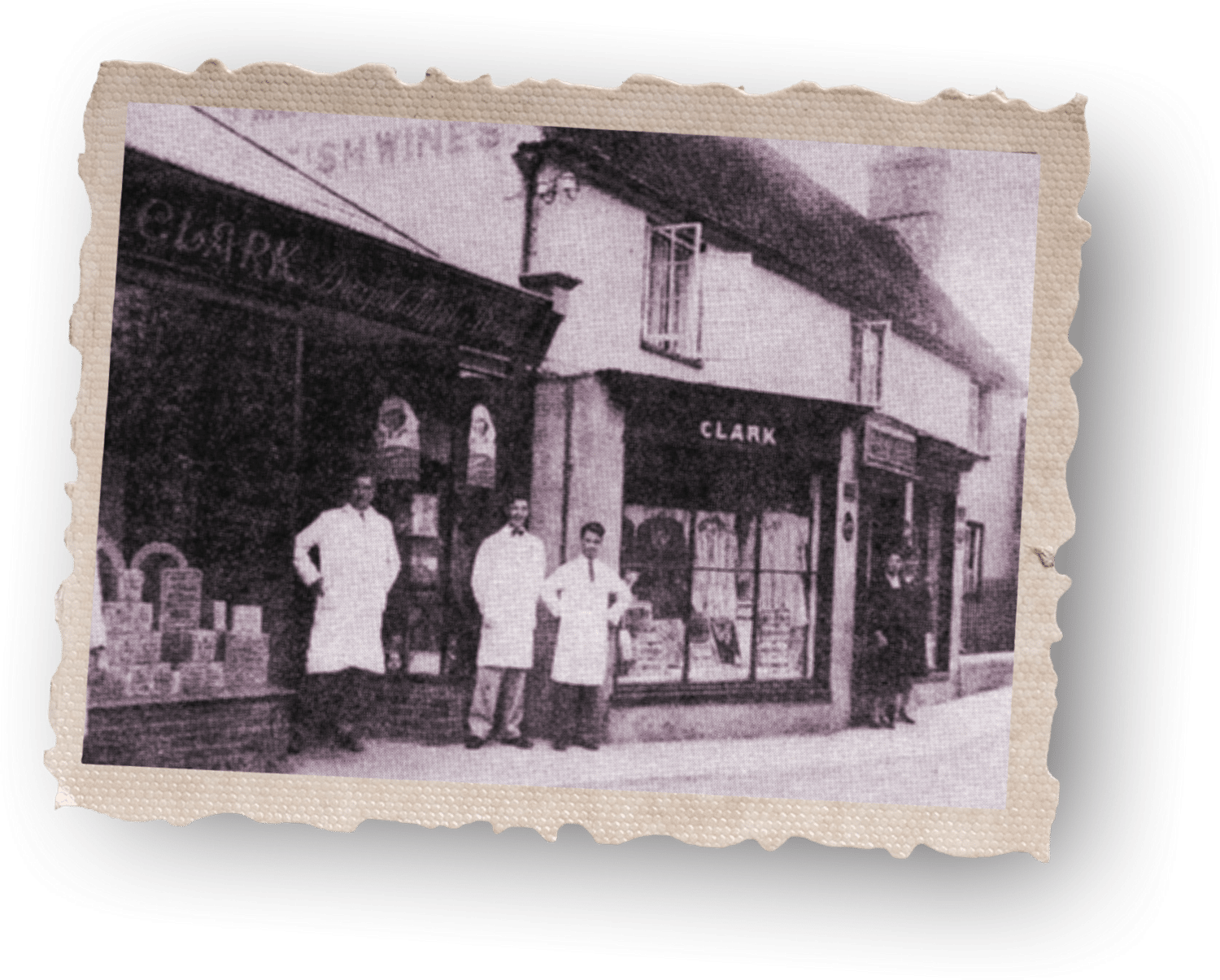
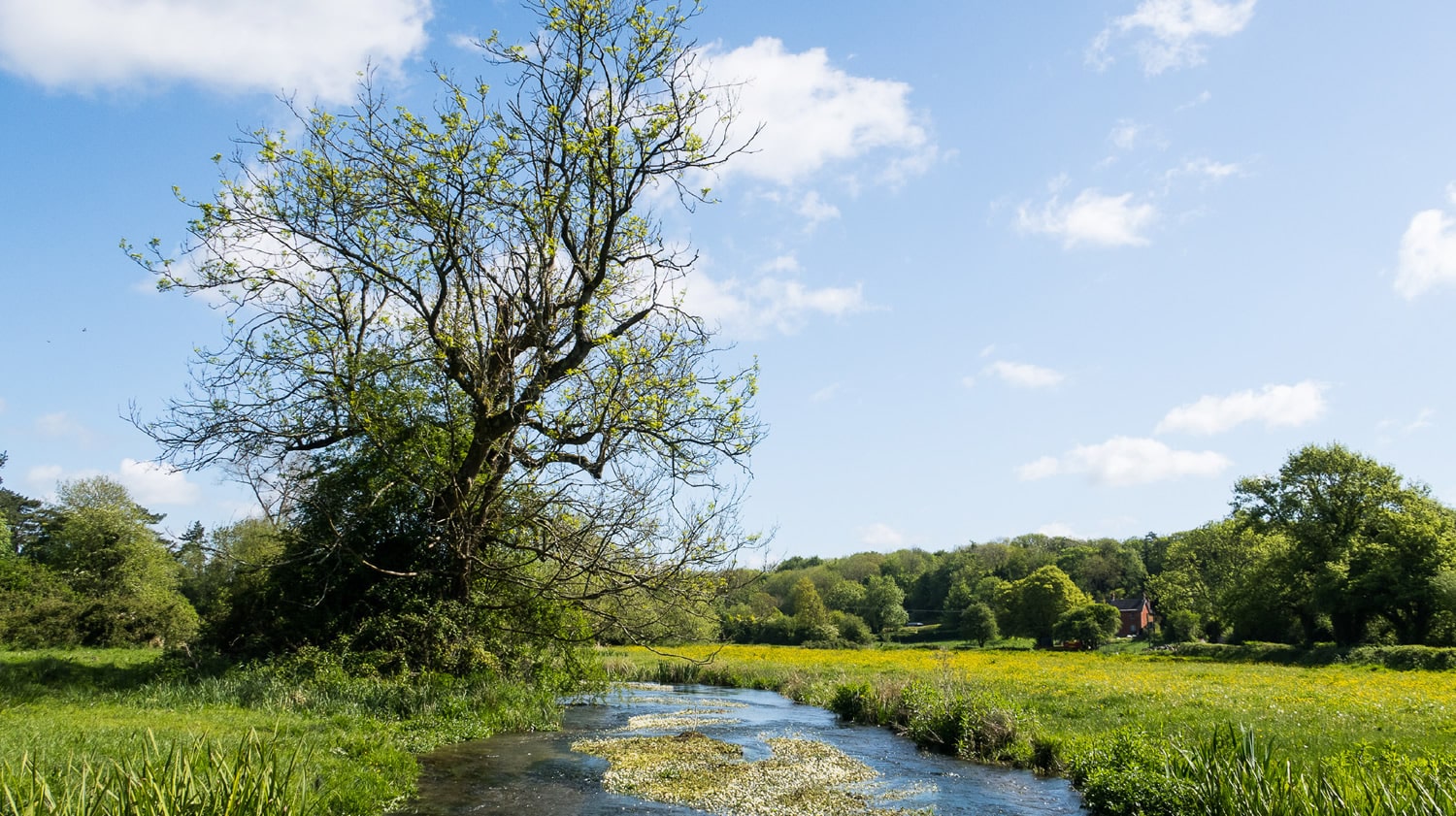
Modern day Droxford is an attractive and characterful village, now more a place of domesticity and recreation than a hard working rural hub.
The lively community here supports a range of clubs and societies. Local amenities include a post office, two garages, a junior school, two pubs, a local shop and a village hall.
This is a wonderful base for enjoying the delightful local landscape, its nature and heritage. Droxford stands at the crossroads of two well-known trails, ideal for exploring the area.
The Wayfarers Walk runs from the Wessex Downs at Inkpen to the harbour at Emsworth.
The Meon Valley Trail follows the former railway line from West Meon to Wickham.
For full information on Droxford’s community and facilities go to www.droxfordweb.co.uk
After decades of planning and negotiation, the South Downs became Britain’s newest National Park in 2011. This treasured landscape now benefits from consistent protection and stewardship for the benefit of all.
The Meon Valley is one of the Park’s natural highlights. Careful conservation of its chalk stream habitat has led to the return of otters and water voles. Rainwater is naturally purified as it percolates through the chalk, before emerging as the gin-clear spring-water that sustains the Meon, readily seen from the water meadows behind this church.
See the National Park website at: www.southdowns.gov.uk
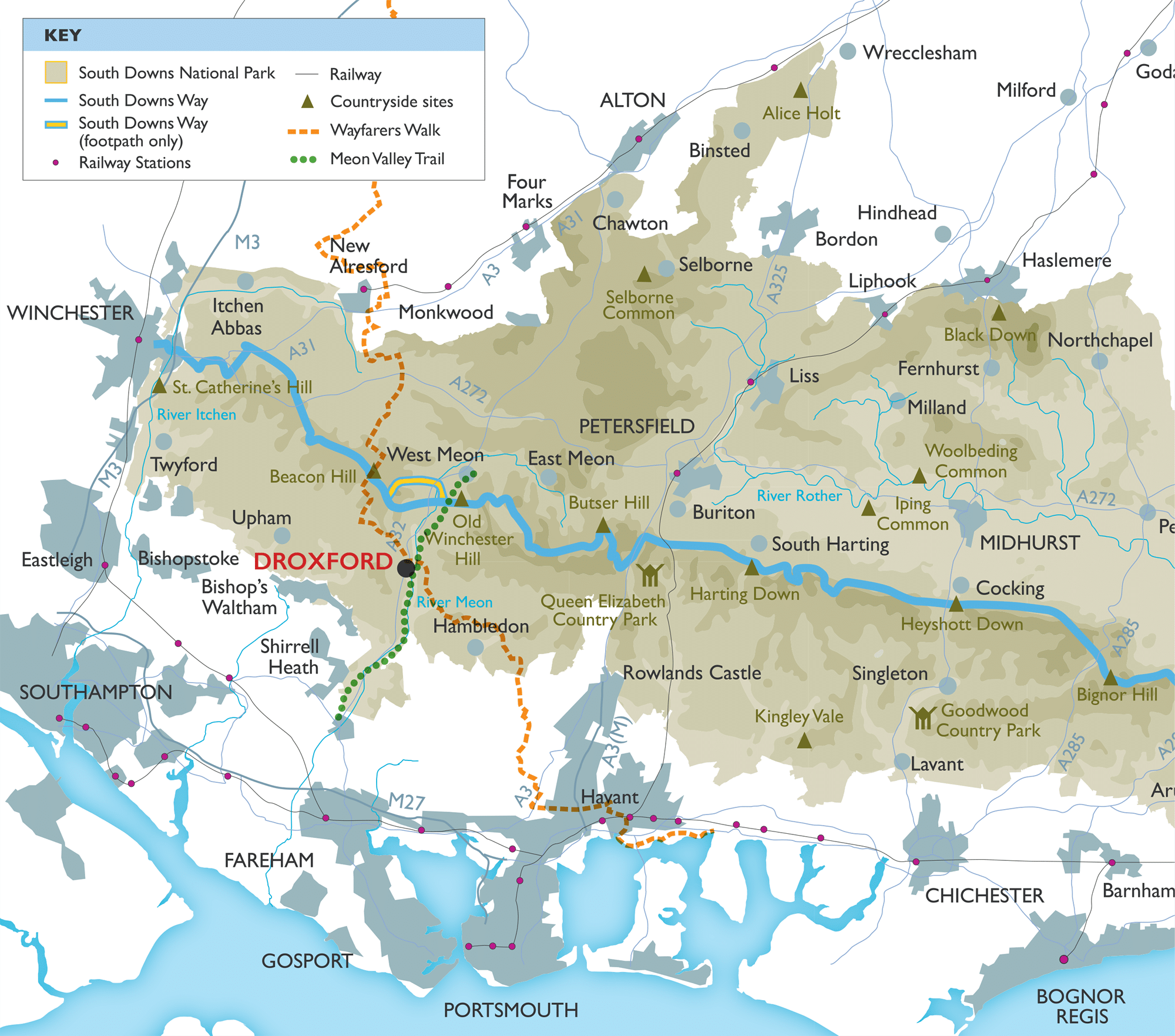
© South Downs National Park Authority
Written by Ivor Coleman, Designed by David Goodman